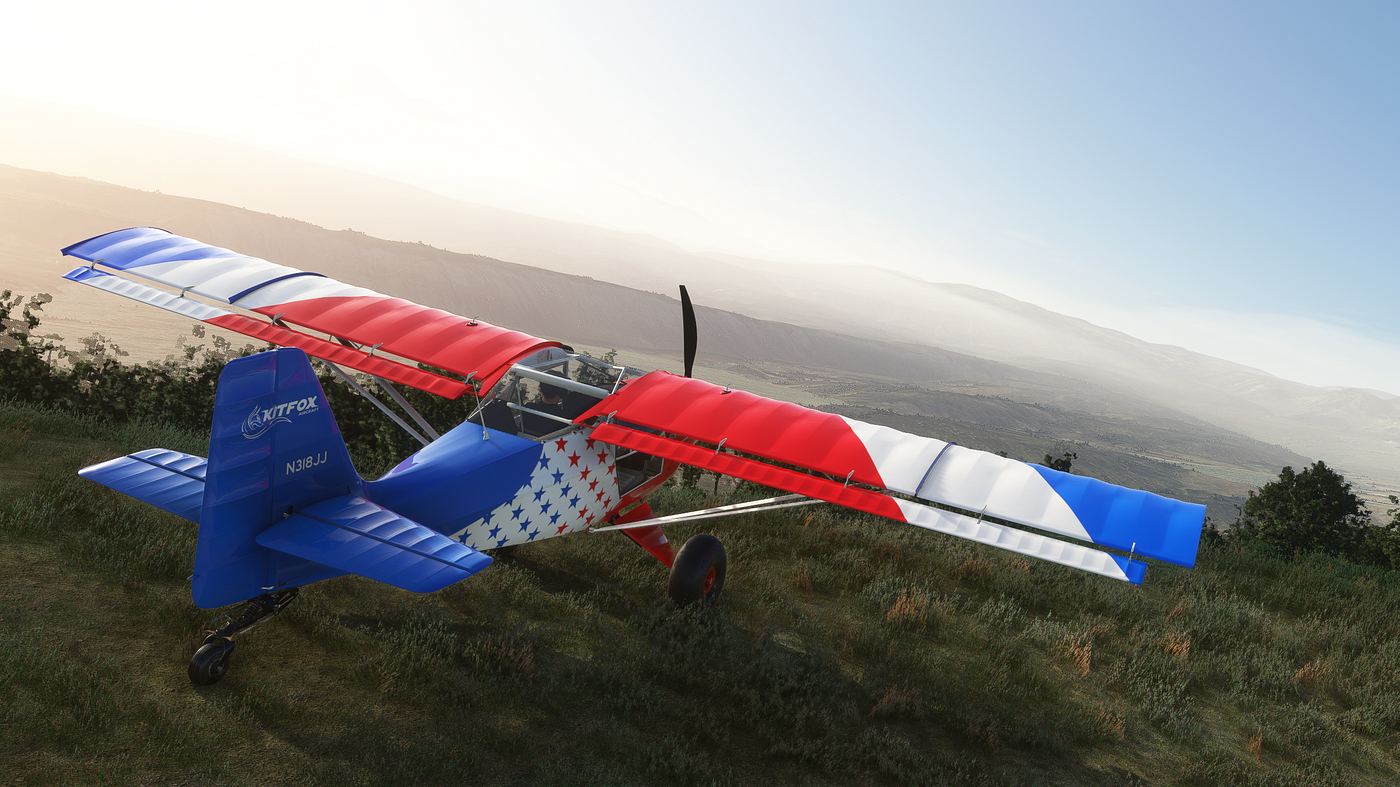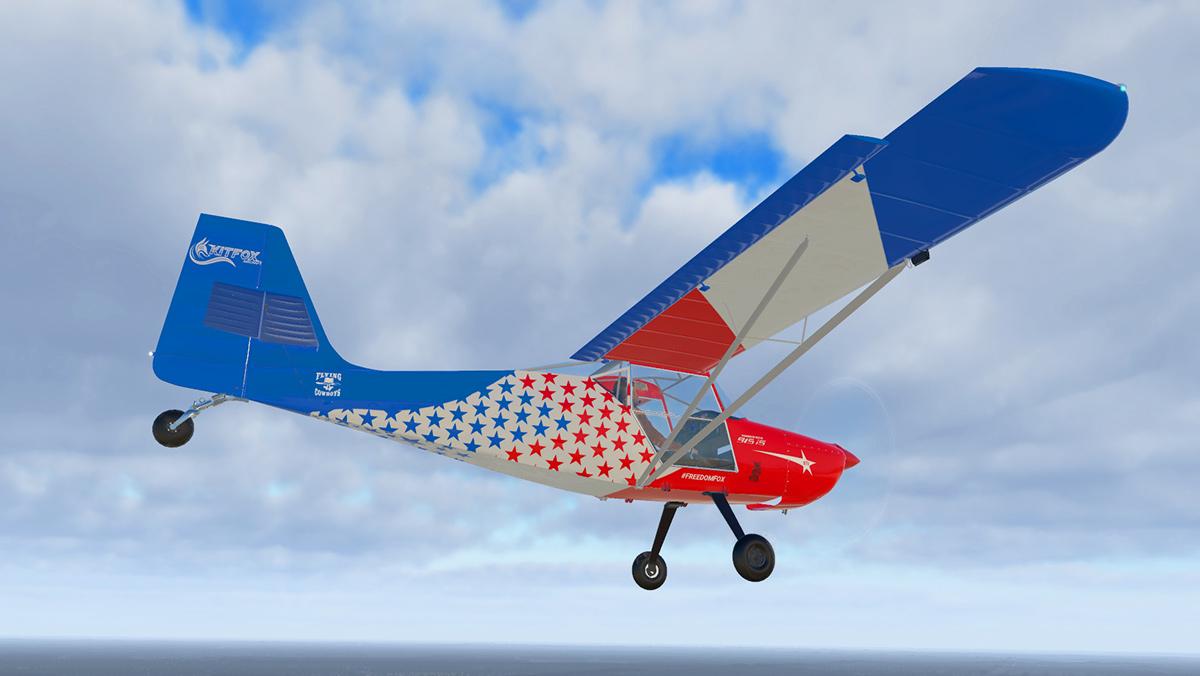Kit Fox Airplane - Members Learn More Save More - Get More From Being A Driver - Click Here
The side-by-side two-seat Kitfox is a stick-and-steering machine designed for adventures. Typically found exploring the backcountry or competing in short takeoff and landing (STOL) demonstrations, these experimental aircraft can be the perfect fit for pilots looking to get off the beaten path.
Kit Fox Airplane

Besides its flaperons and Rotax engines, another factor that sets the Kitfox apart from the average general aviation aircraft is its relatively low cost compared to other off-airport aircraft. Priced at "only $45,000" for an airworthy Kitfox, it's a low price for a new and capable aircraft. Compare that to other backcountry-capable two-seat aircraft like the Carbon Cub (Super Sport at $189,990 base price) or the Aviate Husky (base price: $357,519) and you're walking away with enough money for another plane. A friend can fly in formation with you.
Trent Palmer's Kitfox Is Coming To Flight Simulator
KitFox's practical design leads to lower costs if you want to upgrade avionics or other aircraft components. The Kitfox also has folding wings that allow for "non-traditional aircraft storage and travel". And while most of the Kitfox you fly are taildraggers, there is also a nose wheel option.
While the Kitfox is a capable aircraft, it has some drawbacks. Relatively light, it won't be ideal for particularly stormy days. Also, if you want to fly a group of friends somewhere, a plane with more than two seats may better suit your needs. Polyester fiber siding will also perform better in a hanger environment, which may be a cost (or availability) consideration for those looking to purchase.
If you want to turn on autopilot and get somewhere fast, stick with nosewheel airplanes. If stick and rudder flying adventures are what you're after, choose the Kitfox.
Publishing content creator Alicia Heron joined in 2018. He is a multi-engine commercial pilot with advanced ground and instrument flight instructor certificates. He lives in Los Angeles and loves flying with tailwheels the most. Members do more Learn more Save more - Get more from being a pilot - Click here
Buying And Towing A Kf1
No airplane is immune to the performance penalties that come with heat and altitude, but the Kitfox Series 7 STi doesn't mind them.
Despite a density altitude of 9,000 feet on a hot, foggy, smoky day in Driggs, Idaho (elevation: 6,231 feet), the fully loaded two-seater accelerates intelligently, bounces onto a grass runway after a 250-foot descent, and reaches 70 knots at 1,000 feet per hour. at minute speed.
The cylinder heads of the aircraft's semi-liquid-cooled, turbocharged Rotax 915 engine remain well within normal temperature limits; A three blade, constant-speed MT prop roars at good pitch/high RPM; And 29-inch Alaskan bushwheels and nitrogen shocks create a nearly smooth rutted trail surface.

"We're from this area, so we build airplanes that perform well in these challenging conditions," said John McBean, president of KitFox Aircraft, an 18-employee Homedale, Idaho, and former A-10 Air Force company American. team leader "In other places this kind of density altitude would be extreme, but for us, it's just another day of summer in the mountains."
Flightlog: Flying The Kitfox On Floats
KitFox has delivered more than 7,000 kits since its founding in 1984, and more than 3,500 of its steel-frame, fabric-covered, folding-wing aircraft have been registered and flown in the United States. Kitfox helped popularize backcountry flying among pilots of experimental/amateur-built aircraft, and its 141-horsepower STi (stands for "STOL Inspired") is the company's most powerful and high-performance model.
The STi is optimized for off-airport use, not just unimproved runways. And at a time when getting away from it all has captured the imagination of people the world over, the STi lets riders do it with confidence and style.
"We've focused on backcountry flying since our company started 35 years ago," McBean said. "This has always been central to why we fly and everything else we do."
Other Kitfox models like the Super Sport and Speedster are faster, more agile and more fuel efficient. But the STi is an unapologetic rock crawler meant for the bush.
Vmar Kitfox Ep Arf Kit
The STi sits high on the Tundra's tires which give it an unmistakable, nose-up stance on the ground. All three wheels with ample wheelbase for uneven surfaces and heavy-duty shock absorbers on rocks. See-through doors and a full greenhouse increase visibility. A sharp line of vortex generators at the top of the wings (and below the horizontal stabilizer) keeps the airflow connected at high angles of attack, and the prominent stall fence helps achieve the same goal.
Other aspects that stand out when first encountering the STi are a sleek cowling and a three-bladed wide-chord propeller, which reminds the STi of a turboprop (which it isn't). The four-cylinder Rotax 915 iS engine can easily do with a smaller air intake than a fully air-cooled engine, and this makes for an excellent narrow fairing.
Kitfox has used flaperons to increase roll control and lift since its inception, and the combined flaps/ailerons on the STi span almost its entire wingspan. Those cloth-covered flaperons and counterweights are lowered a few inches below the trailing edges of the wings, and the angle of the flaperon increases as the pilot adjusts it to add both lift and drag. Each time the pilot moves the control stick sideways the flaperons for roll control continue to move differently (one up, one down).

Advantages of the Flaperon include lighter weight and increased durability for greater effectiveness. The main disadvantage of flaperons is the increased adverse yaw compared to conventional ailerons.
Kitfox Classic Iv
The STi horizontal stabilizer is reinforced by a metal strut. The purpose of the rubber gasket on the elevator is to relieve pitching forces and increase the effectiveness of the elevator. Traction handles on the rear fuselage make it easy to move the aircraft on the ground.
Avionics in the STi, like any experimental/amateur aircraft, are left to the manufacturer's discretion. The STi factory demonstrator I evaluated (N81KA) has minimal VFR instrumentation in keeping with the aircraft's backcountry emphasis on light weight and maximum performance.
The panel also contained some telltale clues about the aircraft's character: a simple skid/skid pallet was displayed directly in front of the left-seat pilot; And a colored angle-of-attack indicator was located directly above it. Those were not coincidences. Clearly, the manufacturer's instrument placement indicates that the most important aspects of flying this aircraft are coordination and approach, but not beyond the critical wing angle of attack.
Boarding a plane involves ducking under a top-hinged door, sitting in a half-back seat, then swinging your leg over a floor-mounted control stick. A four-point seat belt harness secures me in the left seat while McBean, a veteran flight instructor, does the same on my right.
Kitplanes Feature: Buying A Used Kitfox
Engine cranking is normal for Rotax engines, should be easy to press. There is no mixture control and, on this aircraft, no propeller control either. The engine can select between low propeller pitch/high RPM (for takeoff, climb and landing) and high pitch/low RPM for maximum cruising efficiency. It also runs its own self-diagnosis after startup to ensure its electronic dual ignition and hydraulic propeller governor are operating normally.
Taxiing requires surprisingly heavy steering pressure and some differential braking because of the large surface area the soft Tundra tires make contact with the ground. Visibility over the nose is limited by the aircraft's high deck angle, so the pilot relies on an S-turn and has unrestricted visibility to the sides through the aircraft's acrylic doors and windows. (The pilot can also taxi or fly with the doors fully open or completely removed.)
Grass-lined on Runway 22 with an eight knot headwind and flaperons overhead, I release the tip brakes, add full engine power and try to keep my expectations low. In such thin air, the propeller cannot provide the same thrust, or the wings, the same lift, as they would at a healthy altitude. It seems cruelly unfair to rate any aircraft on such a day.

But when the propeller shifts to low gear and the turbocharged engine throws out 37 inches of manifold pressure, the plane charges up quickly. A forward nudge lifts the tail wheel off the ground at about 20 knots and maintaining a tail-down attitude lifts the aircraft off the ground and climbs in about six seconds and 250 feet of ground travel.
Kitfox Aircraft Hi Res Stock Photography And Images
Climbing at 70 KIAS, fully fueled and with about 10 pounds of baggage, it achieved a sustained rate of climb of 1,000 feet per minute despite the absurd density altitude. Light to moderate right hand steering is required to keep the ball centered on the upswing.
The Rotax 915iS spins at 5,800 rpm at full power and a reduction drive slows the prop to a maximum of 2,300 rpm. A fully automatic turbocharger allows the engine to maintain full rated power up to 15,000 feet.
Once in the practice area, a series of maneuvers including steep turns and lazy eights showed the aircraft to be slightly lighter in pitch than roll, and lightest in deterioration. In other words, the rudder was very light, the elevator very light, throughout the aircraft's speed range.
Fox airplane engines, airplane hangar door kit, fox news airplane crash, flying fox airplane, fox airplane, toy airplane kit, fox 35 model airplane engine, airplane hangar kit, kit fox airplane price, fox rc airplane engines, airplane tool kit, fox model airplane engines